#Internet of Things (IoT) Controllers market
Explore tagged Tumblr posts
Text
Battery-operated Remote Terminal Units Market Research, Size, Share, Analysis, Overview and Regional Outlook Study 2017 – 2032
The market for Remote Terminal Units (RTUs) that are battery-operated allows them to function in isolated or off-grid regions where access to a reliable power supply is restricted. RTUs are electronic devices used to monitor and manage remote equipment and processes in many different industries, such as oil and gas, water and wastewater management, power distribution, and telecommunications. Here is a summary of the market for battery-operated RTUs, including information on demand:
Market Overview: Due to a number of circumstances, the market for battery-operated RTUs has been expanding. The need for battery-operated RTUs has been fueled by the necessity for remote monitoring and control capabilities in various industries, particularly in places with weak power infrastructure. These devices enable efficient monitoring and control of remote assets without the requirement for a continual external power source thanks to their dependable and autonomous operation.
Demand Drivers:
1. Real-time monitoring and control of assets: situated in remote or isolating locations are necessary in many businesses. Without the requirement for a sizable power infrastructure or reliance on cable connections, battery-operated RTUs allow for effective data gathering, monitoring, and control of these assets.
2. Applications Off-Grid: In off-grid applications where access to a dependable power supply is restricted or nonexistent, battery-operated RTUs are widely used. Examples include remote water pumping stations in rural areas, environmental monitoring stations, remote weather monitoring stations, and remote oil and gas wellheads.
3. Emergency and Temporary Installations: Whereas immediate deployment is necessary, battery-powered RTUs are also used in emergency and temporary installations. When catastrophe recovery, building projects, or temporary infrastructure installations are taking place, these machines can instantly provide remote monitoring and control capabilities.
4. Environmental Monitoring: Data collection from remote weather stations, air quality sensors, and water quality sensors are all important aspects of environmental monitoring that battery-operated RTUs play a key role in. Continuous monitoring is made possible in remote or environmentally delicate locations by these equipment.
5. IoT Connectivity: The need for battery-operated RTUs has increased as the Internet of Things (IoT) is becoming more widely used in a variety of businesses. These devices are essential parts of IoT networks because they provide seamless data transmission, communication, and control between remote assets and central management systems.
Here are some of the key benefits for Stakeholders:
Remote Monitoring and Control
Flexibility and Mobility
Cost-Effective Deployment
Resilience to Power Outages
Integration with IoT and Smart Grids
Increased Data Accessibility
Environmental Monitoring and Compliance
Rapid Deployment for Emergency Response
Redundancy and Reliability
Scalability and Future-Proofing
We recommend referring our Stringent datalytics firm, industry publications, and websites that specialize in providing market reports. These sources often offer comprehensive analysis, market trends, growth forecasts, competitive landscape, and other valuable insights into this market.
By visiting our website or contacting us directly, you can explore the availability of specific reports related to this market. These reports often require a purchase or subscription, but we provide comprehensive and in-depth information that can be valuable for businesses, investors, and individuals interested in this market.
“Remember to look for recent reports to ensure you have the most current and relevant information.”
Click Here, To Get Free Sample Report: https://stringentdatalytics.com/sample-request/battery-operated-remote-terminal-units-market/10333/
Market Segmentations:
Global Battery-operated Remote Terminal Units Market: By Company • SIEMENS • SENECA • Omniflex • King Pigeon Communication Co.,Limited • Servelec Group • TEKBOX • Micro Sensor Co., Ltd. • Hitachi Group • Remsdaq Ltd Global Battery-operated Remote Terminal Units Market: By Type • GPRS • GSM • Modular • Others Global Battery-operated Remote Terminal Units Market: By Application • Power Industry • Government and Utilities • Industrial Global Battery-operated Remote Terminal Units Market: Regional Analysis The regional analysis of the global Battery-operated Remote Terminal Units market provides insights into the market's performance across different regions of the world. The analysis is based on recent and future trends and includes market forecast for the prediction period. The countries covered in the regional analysis of the Battery-operated Remote Terminal Units market report are as follows: North America: The North America region includes the U.S., Canada, and Mexico. The U.S. is the largest market for Battery-operated Remote Terminal Units in this region, followed by Canada and Mexico. The market growth in this region is primarily driven by the presence of key market players and the increasing demand for the product. Europe: The Europe region includes Germany, France, U.K., Russia, Italy, Spain, Turkey, Netherlands, Switzerland, Belgium, and Rest of Europe. Germany is the largest market for Battery-operated Remote Terminal Units in this region, followed by the U.K. and France. The market growth in this region is driven by the increasing demand for the product in the automotive and aerospace sectors. Asia-Pacific: TheAsia-Pacific region includes Singapore, Malaysia, Australia, Thailand, Indonesia, Philippines, China, Japan, India, South Korea, and Rest of Asia-Pacific. China is the largest market for Battery-operated Remote Terminal Units in this region, followed by Japan and India. The market growth in this region is driven by the increasing adoption of the product in various end-use industries, such as automotive, aerospace, and construction. Middle East and Africa: The Middle East and Africa region includes Saudi Arabia, U.A.E, South Africa, Egypt, Israel, and Rest of Middle East and Africa. The market growth in this region is driven by the increasing demand for the product in the aerospace and defense sectors. South America: The South America region includes Argentina, Brazil, and Rest of South America. Brazil is the largest market for Battery-operated Remote Terminal Units in this region, followed by Argentina. The market growth in this region is primarily driven by the increasing demand for the product in the automotive sector.
Visit Report Page for More Details: https://stringentdatalytics.com/reports/battery-operated-remote-terminal-units-market/10333/
Reasons to Purchase Battery-operated Remote Terminal Units Market Report:
• To obtain insights into industry trends and dynamics, including market size, growth rates, and important factors and difficulties. This study offers insightful information on these topics.
• To identify important participants and rivals: This research studies can assist companies in identifying key participants and rivals in their sector, along with their market share, business plans, and strengths and weaknesses.
• To comprehend consumer behaviour: these research studies can offer insightful information about customer behaviour, including preferences, spending patterns, and demographics.
• To assess market opportunities: These research studies can aid companies in assessing market chances, such as prospective new goods or services, fresh markets, and new trends.
In general, market research studies offer companies and organisations useful data that can aid in making decisions and maintaining competitiveness in their industry. They can offer a strong basis for decision-making, strategy formulation, and company planning.
About US:
Stringent Datalytics offers both custom and syndicated market research reports. Custom market research reports are tailored to a specific client's needs and requirements. These reports provide unique insights into a particular industry or market segment and can help businesses make informed decisions about their strategies and operations.
Syndicated market research reports, on the other hand, are pre-existing reports that are available for purchase by multiple clients. These reports are often produced on a regular basis, such as annually or quarterly, and cover a broad range of industries and market segments. Syndicated reports provide clients with insights into industry trends, market sizes, and competitive landscapes. By offering both custom and syndicated reports, Stringent Datalytics can provide clients with a range of market research solutions that can be customized to their specific needs
Contact US:
Stringent Datalytics
Contact No - +1 346 666 6655
Email Id - [email protected]
Web - https://stringentdatalytics.com/
#Battery-operated Remote Terminal Units#RTU Market#Remote Monitoring#Wireless RTU#Industrial Automation#Battery-powered RTU#IoT (Internet of Things)#Energy Efficiency#Data Collection#Telemetry#Remote Control#Battery-powered Sensors#SCADA (Supervisory Control and Data Acquisition)#Energy Management#Off-grid Applications#Renewable Energy#Battery Technology#Remote Sensing#Communication Protocols#Edge Computing#Connectivity Solutions#Remote Data Acquisition#Condition Monitoring#Asset Management.
0 notes
Text
"In the age of smart fridges, connected egg crates, and casino fish tanks doubling as entry points for hackers, it shouldn’t come as a surprise that sex toys have joined the Internet of Things (IoT) party.
But not all parties are fun, and this one comes with a hefty dose of risk: data breaches, psychological harm, and even physical danger.
Let’s dig into why your Bluetooth-enabled intimacy gadget might be your most vulnerable possession — and not in the way you think.
The lure of remote-controlled intimacy gadgets isn’t hard to understand. Whether you’re in a long-distance relationship or just like the convenience, these devices have taken the market by storm.
According to a 2023 study commissioned by the U.K.’s Department for Science, Innovation, and Technology (DSIT), these toys are some of the most vulnerable consumer IoT products.
And while a vibrating smart egg or a remotely controlled chastity belt might sound futuristic, the risks involved are decidedly dystopian.
Forbes’ Davey Winder flagged the issue four years ago when hackers locked users into a chastity device, demanding a ransom to unlock it.
Fast forward to now, and the warnings are louder than ever. Researchers led by Dr. Mark Cote found multiple vulnerabilities in these devices, primarily those relying on Bluetooth connectivity.
Alarmingly, many of these connections lack encryption, leaving the door wide open for malicious third parties.
If you’re picturing some low-stakes prank involving vibrating gadgets going haywire, think again. The risks are far graver.
According to the DSIT report, hackers could potentially inflict physical harm by overheating a device or locking it indefinitely. Meanwhile, the psychological harm could stem from sensitive data — yes, that kind of data — being exposed or exploited.
A TechCrunch exposé revealed that a security researcher breached a chastity device’s database containing over 10,000 users’ information. That was back in June, and the manufacturer still hasn’t addressed the issue.
In another incident, users of the CellMate connected chastity belt reported hackers demanding $750 in bitcoin to unlock devices. Fortunately, one man who spoke to Vice hadn’t been wearing his when the attack happened. Small mercies, right?
These aren’t isolated events. Standard Innovation Corp., the maker of the We-Vibe toy, settled for $3.75 million in 2017 after it was discovered the device was collecting intimate data without user consent.
A sex toy with a camera was hacked the same year, granting outsiders access to its live feed.
And let’s not forget: IoT toys are multiplying faster than anyone can track, with websites like Internet of Dongs monitoring the surge.
If the thought of a connected chastity belt being hacked makes you uneasy, consider this: sex toys are just a small piece of the IoT puzzle.
There are an estimated 17 billion connected devices worldwide, ranging from light bulbs to fitness trackers — and, oddly, smart egg crates.
Yet, as Microsoft’s 2022 Digital Defense Report points out, IoT security is lagging far behind its software and hardware counterparts.
Hackers are opportunistic. If there’s a way in, they’ll find it. Case in point: a casino lost sensitive customer data after bad actors accessed its network through smart sensors in a fish tank.
If a fish tank isn’t safe, why would we expect a vibrating gadget to be?
Here’s where the frustration kicks in: these vulnerabilities are preventable.
The DSIT report notes that many devices rely on unencrypted Bluetooth connections or insecure APIs for remote control functionality.
Fixing these flaws is well within the reach of manufacturers, yet companies routinely fail to prioritize security.
Even basic transparency around data collection would be a step in the right direction. Users deserve to know what’s being collected, why, and how it’s protected. But history suggests the industry is reluctant to step up.
After all, if companies like Standard Innovation can get away with quietly siphoning off user data, why would smaller players bother to invest in robust security?
So, what’s a smart-toy enthusiast to do? First, ask yourself: do you really need your device to be connected to an app?
If the answer is no, then maybe it’s best to go old school. If remote connectivity is a must, take some precautions.
Keep software updated: Ensure both the device firmware and your phone’s app are running the latest versions. Updates often include critical security patches.
Use secure passwords: Avoid default settings and choose strong, unique passwords for apps controlling your devices.
Limit app permissions: Only grant the app the bare minimum of permissions needed for functionality.
Vet the manufacturer: Research whether the company has a history of addressing security flaws. If they’ve been caught slacking before, it’s a red flag.
The conversation around sex toy hacking isn’t just about awkward headlines — it’s about how we navigate a world increasingly dependent on connected technology. As devices creep further into every corner of our lives, from the bedroom to the kitchen, the stakes for privacy and security continue to rise.
And let’s face it: there’s something uniquely unsettling about hackers turning moments of intimacy into opportunities for exploitation.
If companies won’t take responsibility for protecting users, then consumers need to start asking tough questions — and maybe think twice before connecting their pleasure devices to the internet.
As for the manufacturers? The message is simple: step up or step aside.
No one wants to be the next headline in a tale of hacked chastity belts and hijacked intimacy. And if you think that’s funny, just wait until your light bulb sells your Wi-Fi password.
This is where IoT meets TMI. Stay connected, but stay safe."
https://thartribune.com/government-warns-couples-that-sex-toys-remain-a-tempting-target-for-hackers-with-the-potential-to-be-weaponized/
#iot#I only want non-smart devices#I don't want my toilet to connect to the internet#seriously#smart devices#ai#anti ai#enshittification#smart sex toys
26 notes
·
View notes
Text


Author: CrimethInc. Topic: technology
“The future is already here,” Cyberpunk pioneer William Gibson once said; “it’s just not very evenly distributed.” Over the intervening decades, many people have repurposed that quote to suit their needs. Today, in that tradition, we might refine it thus: War is already here—it’s just not very evenly distributed.
Never again will the battlefield be just state versus state; it hasn’t been for some time. Nor are we seeing simple conflicts that pit a state versus a unitary insurgent that aspires to statehood. Today’s wars feature belligerents of all shapes and sizes: states (allied and non-allied), religious zealots (with or without a state), local and expatriate insurgents, loyalists to former or failing or neighboring regimes, individuals with a political mission or personal agenda, and agents of chaos who benefit from the instability of war itself. Anyone or any group of any size can go to war.
The increased accessibility of the technology of disruption and war[1] means the barrier to entry is getting lower all the time. The structure of future wars will sometimes feel familiar, as men with guns murder children and bombs level entire neighborhoods—but it will take new forms, too. Combatants will manipulate markets and devalue currencies. Websites will be subject to DDoS attacks and disabling—both by adversaries and by ruling governments. Infrastructure and services like hospitals, banks, transit systems, and HVAC systems will all be vulnerable to attacks and interruptions.
In this chaotic world, in which new and increasing threats ceaselessly menace our freedom, technology has become an essential battlefield. Here at the CrimethInc. technology desk, we will intervene in the discourse and distribution of technological know-how in hopes of enabling readers like you to defend and expand your autonomy. Let’s take a glance at the terrain.
Privacy
The NSA listens to, reads, and records everything that happens on the internet.
Amazon, Google, and Apple are always listening[2] and sending some amount[3] of what they hear back to their corporate data centers[4]. Cops want that data. Uber, Lyft, Waze, Tesla, Apple, Google, and Facebook know your whereabouts and your movements all of the time. Employees spy on users.
Police[5] want access to the contents of your phone, computer, and social media accounts—whether you’re a suspected criminal, a dissident on a watch list, or an ex-wife.
The business model of most tech companies is surveillance capitalism. Companies learn everything possible about you when you use their free app or website, then sell your data to governments, police, and advertisers. There’s even a company named Palantir, after the crystal ball in The Lord of the Rings that the wizard Saruman used to gaze upon Mordor—through which Mordor gazed into Saruman and corrupted him.[6] Nietzsche’s famous quote, “When you look long into an abyss, the abyss also looks into you,” now sounds like a double transcription error: surely he didn’t mean abyss, but app.
Security
Self-replicating malware spreads across Internet of Things (IoT) devices like “smart” light bulbs and nanny cams, conscripting them into massive botnets. The people who remotely control the malware then use these light bulbs and security cameras to launch debilitating DDoS[7] attacks against DNS providers, reporters, and entire countries.
Hackers use ransomware to hold colleges, hospitals, and transit systems hostage. Everything leaks, from nude photos on celebrities’ phones to the emails of US political parties.
Capital
Eight billionaires combined own as much wealth as the poorest 50% of the world’s population. Four of those eight billionaires are tech company founders.[8] Recently, the President of the United States gathered a group of executives to increase collaboration between the tech industry and the government.[9]
The tech industry in general, and the Silicon Valley in particular, has a disproportionately large cultural influence. The tech industry is fundamentally tied to liberalism and therefore to capitalism. Even the most left-leaning technologists aren’t interested in addressing the drawbacks of the social order that has concentrated so much power in their hands.[10]
War
Nation states are already engaging in cyber warfare. Someone somewhere[11] has been learning how to take down the internet.
Tech companies are best positioned to create a registry of Muslims and other targeted groups. Even if George W. Bush and Barack Obama hadn’t already created such lists and deported millions of people, if Donald Trump (or any president) wanted to create a registry for roundups and deportations, all he’d have to do is go to Facebook. Facebook knows everything about you.
The Obama administration built the largest surveillance infrastructure ever—Donald Trump’s administration just inherited it. Liberal democracies and fascist autocracies share the same love affair with surveillance. As liberalism collapses, the rise of autocracy coincides with the greatest technical capacity for spying in history, with the least cost or effort. It’s a perfect storm.
This brief overview doesn’t even mention artificial intelligence (AI), machine learning, virtual reality (VR), augmented reality (AR), robots, the venture capital system, or tech billionaires who think they can live forever with transfusions of the blood of young people.
Here at the tech desk, we’ll examine technology and its effects from an anarchist perspective. We’ll publish accessible guides and overviews on topics like encryption, operational security, and how to strengthen your defenses for everyday life and street battles. We’ll zoom out to explore the relation between technology, the state, and capitalism—and a whole lot more. Stay tuned.
Footnotes
[1] A surplus of AK-47s. Tanks left behind by U.S. military. Malware infected networked computer transformed into DDoS botnets. Off the shelf ready to execute scripts to attack servers.
[2] Amazon Echo / Alexa. Google with Google Home. Apple with Siri. Hey Siri, start playing music.
[3] What, how much, stored for how long, and accessible by whom are all unknown to the people using those services.
[4] Unless you are a very large company, “data center” means someone else’s computer sitting in someone else’s building.
[5] Local beat cops and police chiefs, TSA, Border Patrol, FBI… all the fuckers.
[6] Expect to read more about Palantir and others in a forthcoming article about surveillance capitalism.
[7] Distributed Denial of Service. More on this in a later article, as well.
[8] Bill Gates, Jeff Bezos, Mark Zuckerberg, Larry Ellison. In fact, if you count Michael Bloomberg as a technology company, that makes five.
[9] In attendance: Eric Trump. Brad Smith, Microsoft president and chief legal officer. Jeff Bezos, Amazon founder and CEO. Larry Page, Google founder and Alphabet CEO. Sheryl Sandberg, Facebook COO. Mike Pence. Donald Trump. Peter Thiel, venture capitalist. Tim Cook, Apple CEO. Safra Catz, Oracle CEO. Elon Musk, Tesla CEO. Gary Cohn, Goldman Sachs president and Trump’s chief economic adviser. Wilbur Ross, Trump’s commerce secretary pick. Stephen Miller, senior policy adviser. Satya Nadella, Microsoft CEO. Ginni Rometty, IBM CEO. Chuck Robbins, Cisco CEO. Jared Kushner, investor and Trump’s son-in-law. Reince Priebus, chairman of the Republican National Committee and White House chief of staff. Steve Bannon, chief strategist to Trump. Eric Schmidt, Alphabet president. Alex Karp, Palantir CEO. Brian Krzanich, Intel CEO.
[10] We’ll explore this more in a later article about “The California Ideology.”
[11] Probably a state-level actor such as Russia or China.
#technology#Privacy#Security#Capital#War#anarchism#anarchy#anarchist society#practical anarchy#practical anarchism#resistance#autonomy#revolution#communism#anti capitalist#anti capitalism#late stage capitalism#daily posts#libraries#leftism#social issues#anarchy works#anarchist library#survival#freedom
8 notes
·
View notes
Text
The Future of Low Voltage Switchgear: What’s Next?
Low voltage switchgear plays a critical role in power distribution, ensuring safe and efficient operation across industries such as manufacturing, commercial buildings, healthcare, and renewable energy. With rapid technological advancements, the future of low voltage switchgear is evolving to meet the demands of digitalization, energy efficiency, and sustainability.

Digitalization and Smart Switchgear:
Digital technology is in fact one of the greatest revolutions of low voltage switchgear. Smart switchgear has the capability of IoT (Internet of Things) for real-time monitoring, predictive maintenance, and remote control.
Smart Low Voltage Switchgear: Market Trends and Analysis:
Real-time Data Monitoring: Sensors that conduct data collection and analysis of the voltage, current, temperature, and health of devices.
Predictive Maintenance: With a year of analysing AI-powered data, predicting failures before they happen to reduce downtime and in turn maintenance costs.
Cloud Connectivity: Operators have access to switchgear data from any location, improving remote monitoring and control.
Data Processing Power: AI integration in automation systems speeds up data processing, allowing for faster decisions.
Energy Efficiency and Sustainability:
With rising awareness around sustainability across the globe, manufacturers of low voltage switchgear are designing energy efficient solutions to minimize carbon footprints.
Sustainable Innovations in Low Voltage Switchgear:
Eco-Friendly Insulation Materials: Manufacturers are substituting SF6 (a powerful greenhouse gas) with eco-friendly options.
Low Power Consumption Designs: Designs lose energy less, leading to superior efficiency.
Integration of Renewable Energy: Switchgear is being optimized to manage both solar and wind power, ensuring that the grid runs smoothly.
Recyclable Components: Many more switchgear systems utilize recyclable materials when they reach the end of their lifecycle.
Safer and More Reliable:
Safety remains a top priority in electrical distribution systems. Future low voltage switchgear will incorporate advanced protection mechanisms to minimize electrical hazards and enhance reliability.
Upcoming Safety Enhancements:
Arc Fault Detection Systems (AFDS): These systems detect and suppress like arcs before they harm.
Self-Healing Systems: AI-based switchgear can automatically redirect electricity in the event of failures, avoiding outages.
Touch-Proof Designs: Designs that are insulated and enclosed to avoid accidental electric shock.
Remote Operation and Diagnostics: This minimizes the extent of physical manual inspections resulting in operator safety.
Modular and Compact Designs: Switchgear is getting increasingly modular and compact, as industries call for more flexible and space-saving solutions.
Features of Modular Low Voltage Switchgear:
Scalability: Switchgear can be modified or scaled up or down to meet businesses’ needs, while maintaining system efficiency.
Reduced Installation Time: Pre-configured modules simplify the process of installation, resulting in less labor costs.
The positioned components for simple replacements and upgrades.
The Rise of Solid-State Switchgear:
Industrial low voltage switchgear are mostly mechanical-latch based circuit breakers but the future lies in solid-state low voltage switchgear using semiconductor based switching technology.
Advantages of Solid-State Switchgear:
Speedy Switching: Solid-state systems work on micro seconds, making fault response time low.
Zero Mechanical Wear & Tear − Moving parts are absent, so switchgear has a longer life and better reliability.
Silent Operation: No sound that comes with a conventional electromechanical breaker
Low Maintenance: It is cost-effective owing to lower failures and servicing.
Integration with Smart Grids:
It plays a vital role in the function of smart grid infrastructure as it helps in the distribution of energy and load balancing in a seamless manner.
The Impact of Smart Grids on Low Voltage Switchgear:
Real-time Load Management: Switchgear will do real-time Load Management based on the requirement.
Self-Healing Networks: When a fault occurs, the system will redirect electricity to unaffected areas.
Cybersecurity: With the growing digitalization, manufacturers will adopt robust cybersecurity measures to prevent cyber threats.
AI and Machine Learning in the Healthcare Sector:
With the world’s transition to advanced technology, AI-powered switchgear will be the new ‘normal’ providing more automation and intelligence to power distribution.
Use of AI in Low Voltage Switchgear:
Anomaly detection: AI can find abnormal power consumption and recommend remedial measures.
Energy Forecasting — Machine learning algorithms will be used to forecast energy consumption trends, helping businesses optimize their energy consumption.
Adaptive Systems: AI will maintain optimum settings that increase performance and lifespan.
Conclusion
The future of low voltage switchgear is digital, efficient and green. Thanks to IoT, AI, solid-state technology and smart grids, these advancements will transform power distribution into a safer, smarter and more reliable system.
Adoption of Next Gen switchgear is crucial for modern enterprise to act proactively for cost efficiency and sustainability in energy usage with next gen technologies to leave the competition behind in the market.
6 notes
·
View notes
Text
Future of Energy Harvesting System Market: Innovations & Opportunities
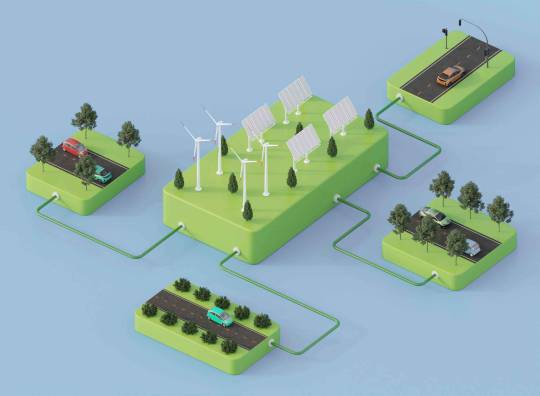
Executive Summary: A Transformational Shift in Energy Utilization
The global energy landscape is undergoing a revolutionary transformation, driven by the rising need for sustainable power sources. Energy Harvesting System Market, which convert ambient energy into electrical energy, are at the forefront of this transition. From reducing battery dependency to enabling long-lasting power for low-energy electronics, energy harvesting is not just an innovation—it is the future of decentralized energy systems. This comprehensive analysis explores market trends, technological advancements, regional dynamics, and competitive strategies shaping the Energy Harvesting System market from 2024 to 2032.
Request Sample Report PDF (including TOC, Graphs & Tables): https://www.statsandresearch.com/request-sample/18569-global-energy-harvesting-system-market
Energy Harvesting System Market Overview: Growth Fueled by Smart Technologies and IoT
The Energy Harvesting System market is experiencing accelerated growth, propelled by the exponential expansion of the Internet of Things (IoT), wearable technology, smart buildings, and industrial automation. As power efficiency becomes a paramount concern, EHS solutions are poised to dominate in areas where battery replacement is infeasible or undesirable.
Key Energy Harvesting System Market Drivers
Escalating demand for wireless sensor networks in industrial automation
Increasing adoption of self-powered wearable electronics
Expansion of smart city infrastructure worldwide
Rising awareness of environmental sustainability
Technological breakthroughs in micro-energy sources
Get up to 30%-40% Discount: https://www.statsandresearch.com/check-discount/18569-global-energy-harvesting-system-market
Energy Harvesting System Market Segmentation by Technology Type
Light Energy Harvesting
Light—especially solar—is the most widely adopted energy harvesting source. Modern photovoltaic (PV) cells integrated into smart sensors enable continuous data transmission, particularly in outdoor and well-lit indoor environments.
Vibration Energy Harvesting
Using piezoelectric, electrostatic, and electromagnetic technologies, vibration-based systems extract energy from motion. This segment is gaining traction in transportation, manufacturing equipment, and infrastructure monitoring.
RF (Radio Frequency) Energy Harvesting
RF harvesting utilizes ambient wireless signals—Wi-Fi, cellular, and TV broadcasts—as power sources. Though it generates smaller outputs, it is ideal for ultra-low-power IoT devices.
Thermal Energy Harvesting
Thermoelectric generators convert heat gradients into electricity. These are valuable in industrial settings with consistent thermal waste, such as oil & gas and automotive sectors.
Application Analysis: Sector-Wise Adoption and Impact
Industrial Applications
The industrial sector is the largest and fastest-growing segment due to widespread use in condition monitoring, predictive maintenance, and machine-to-machine communication. Energy harvesting minimizes downtime and reduces operational costs.
Household Applications
Smart home systems—thermostats, lighting, door locks—are increasingly powered by ambient sources. Energy harvesting eliminates wiring complexity, enhances aesthetics, and prolongs product life.
Commercial Applications
In commercial buildings, EHS supports lighting controls, HVAC automation, and occupancy sensors, driving energy efficiency and compliance with green building standards.
Regional Insights: Growth Hubs and Strategic Opportunities
North America
With robust investments in smart infrastructure and industrial automation, North America leads in technological adoption. The U.S. is a prime consumer due to strong regulatory incentives and innovation hubs.
Europe
Driven by stringent environmental policies and strong R&D investment, Europe showcases rapid uptake in energy harvesting for both consumer electronics and automotive applications.
Asia-Pacific
China, Japan, and India are emerging as manufacturing powerhouses for EHS components. Government-led smart city projects and massive IoT deployment in the region bolster demand.
Competitive Landscape: Strategic Initiatives and Market Leadership
The EHS market is moderately consolidated, with innovation-focused players driving growth through partnerships, acquisitions, and proprietary technology.
Leading Energy Harvesting System Market Participants
Texas Instruments – Renowned for ultra-low-power microcontrollers and energy management ICs.
STMicroelectronics – Offers piezoelectric and thermoelectric energy harvesting kits.
Honeywell International – Specializes in industrial-grade vibration and thermal harvesters.
EnOcean GmbH – Pioneer in wireless energy harvesting solutions for building automation.
Powercast Corporation – Dominant in RF-based harvesting for commercial and consumer applications.
Investment and R&D Trends
Significant capital is being invested in miniaturization, integration, and wireless communication protocols. R&D efforts focus on increasing conversion efficiency, hybrid harvesting systems, and AI-integrated energy management.
Strategic Recommendations for Stakeholders
OEMs: Prioritize integration of hybrid harvesting systems to enhance device versatility.
Investors: Focus on companies offering scalable platforms for IoT and industrial solutions.
Policymakers: Create incentive structures to accelerate deployment in infrastructure and transportation.
Startups: Innovate in niche areas such as biomedical implants and agricultural sensors.
Energy Harvesting System Market Forecast: 2024–2032
The global Energy Harvesting System market is projected to grow at a compound annual growth rate (CAGR) exceeding 10%, reaching a multi-billion-dollar valuation by 2032. The proliferation of wireless electronics and growing sustainability mandates will drive this robust expansion.
Future Outlook: Toward a Battery-Free Ecosystem
Energy harvesting is redefining how devices interact with their environment. By enabling continuous, maintenance-free operation, EHS is laying the groundwork for a future where billions of interconnected devices operate independently of batteries. The confluence of AI, 5G, and ambient energy will define the next phase of ubiquitous computing.
Purchase Exclusive Report: https://www.statsandresearch.com/enquire-before/18569-global-energy-harvesting-system-market
Conclusion
We are at the cusp of a paradigm shift in power generation for low-energy electronics. Energy harvesting is no longer a niche technology—it is an essential enabler of the sustainable, connected future. By adopting and investing in next-generation EHS, industries and governments can future-proof operations, enhance resilience, and lead in the transition toward net-zero energy infrastructure.
Our Services:
On-Demand Reports: https://www.statsandresearch.com/on-demand-reports
Subscription Plans: https://www.statsandresearch.com/subscription-plans
Consulting Services: https://www.statsandresearch.com/consulting-services
ESG Solutions: https://www.statsandresearch.com/esg-solutions
Contact Us:
Stats and Research
Email: [email protected]
Phone: +91 8530698844
Website: https://www.statsandresearch.com
1 note
·
View note
Text
Vertical Farming Market Recent Trends and Growth Analysis Report 2024 – 2030
The global vertical farming market size is expected to reach USD USD 24.95 billion by 2030, according to a new report by Grand View Research, Inc. It is expected to expand at a CAGR of 20.1% from 2023 to 2030. Increased use of Internet of Things (IoT) sensors for producing crops is likely to spur market demand over the forecast period. Information obtained from the sensors is stored on the cloud and analyzed to perform the required actions. The growing automation in agriculture and increasing use of big data and predictive analytics for maximizing yields are also likely to drive the market.
Vertical farming is effective in ensuring stability in crop production and maintaining reliability even in adverse climatic conditions. It provides multiple benefits over the traditional farming technique, such as less use of water, the lesser need for agrochemicals, and low dependence on agricultural labor. Vertical farming makes use of metal reflectors and artificial lighting to maximize natural sunlight.
Genetically modified organisms and the environmental and health effects of pesticides and other non-natural substances that are used for increasing agricultural production have encouraged consumers to adopt organic foods. According to the Organic Trade Association, the U.S. organic industry sales increased by around 5% in 2019 owing to the increased investment in infrastructure and education. As per the Organic Foods Production Act of 1990, the handlers and growers of organic products need to comply with the regulations.
Gather more insights about the market drivers, restrains and growth of the Vertical Farming Market
Detailed Segmentation:
Market Concentration & Characteristics
The vertical farming market growth stage is high. The vertical farming market is witnessing a significant degree of innovation, marked by the adoption of advanced technologies such as sensors and cameras in order to enhance resource efficiency, increase yields, and address challenges such as limited space and environmental constraints. Also, technologies such as hydroponics, aeroponics, LED grow lights, and automation systems are commonly employed to enhance efficiency and crop quality.
Market Dynamics
The growth of the vertical farming market is attributed to factors such as steady population growth, government incentives, limited availability of cultivable land, and the increasing demand for high-quality and fresh food. Moreover, the increasing consumer demand for organic food is positively impacting the growth of the vertical farming market, creating favorable business opportunities. With consumers placing a higher value on organic products, vertical farming is a viable solution to meet this demand.
Component Insights
On the basis of components, vertical farming market is segmented into hardware, software, and services. The hardware segment accounted for the largest market share in 2022. Hardware plays a significant role in maintaining an environment in vertical farming. The segment is further categorized into lighting, hydroponic components, climate control, and sensors. The lighting segment led the market and accounted for more than 44.46% of global hardware revenue in 2022. A large share of the lighting segment can be attributed to the dependence of vertical farms on artificial lighting. Artificial lights provide sufficient light intensities required for crop growth. The climate control segment is expected to register the highest CAGR of 20.6% over forecast period. Increasing adoption of hydroponic components by farmers to minimize weight load and infrastructure needed to support equipment is anticipated to drive demand for hydroponic components.
Growing Mechanism Insights
The Hydroponics segment registered the largest market share in 2022 and is expected to remain dominant between 2023 and 2030. Hydroponics is a popular growth mechanism due to low installation costs and ease of operations. It is a method of growing plants without soil, where soil is replaced by mineral solution inserted around plant roots. Additionally, the hydroponics method removes the risk of soil organisms causing diseases.
Crop Category Insights
The fruits, vegetables, & herbs segment registered the largest market share in 2022 and is expected to remain dominant between 2023 and 2030. Increasing cultivation of commonly grown fruits and vegetables in vertical farming is driving segment growth. Crops grown in vertical farming provide maximum profit to companies involved in their cultivation. At the same time, vertical farming improves biodiversity as it does not cause land disturbances. As such, vertical farming is in high demand for growing different types of crops. Further, fruits, vegetables, & herbs are segmented into tomato, lettuce, bell, chili peppers, strawberry, cucumber, leafy greens (excluding lettuce), herbs, and others. Among which tomatoes segment led the market and accounted for more than 24.23% of global fruits, vegetables, & herbs revenue in 2022.
Structure Insights
The shipping container segment dominated the market with a share of about 53.32% in 2022 and is expected to remain dominant between 2023 and 2030. This growth is attributed to the ability of structure to help grow crops irrespective of geographic location. One of the primary benefits of container-based farming is that container farms are easy to transport, and one doesn't require a large piece of land or dedicated building to start cultivating.
Regional Insights
In terms of revenue, Europe dominated the vertical farming market in 2022 with a share of approximately 31.7% and is expected to remain dominant between 2023 and 2030. Growing awareness regarding the importance of alternative farming owing to less availability of fertile agricultural land and increasing population in the region is the key factor anticipated to spur the demand.
Browse through Grand View Research's Next Generation Technologies Industry Research Reports.
• The global synthetic data generation market size was valued at USD 218.4 million in 2023 and is projected to grow at a CAGR of 35.3% from 2024 to 2030.
• The global service virtualization market size was valued at USD 786.0 Million in 2023 and is projected to grow at a compound annual growth rate (CAGR) of 17.4% from 2024 to 2030.
Key Companies & Market Share Insights
Some of the key players operating in the market include Agrilution GmbH; Aerofarm; Brightfarms Inc.; Everlight Electronics Co., Ltd; Freight Farms; GrowUp Urban Farms Ltd.; Green Sense Farms, LLC; Vertical Farm Systems.
• Vertical Farm Systems is engaged in the development of fully automated growing systems with reusable medium and energy efficient climate cells. The company utilizes artificial intelligence (AI) and automation for optimized growing conditions.
• Brightfarms Inc., is an indoor farming company that provides fresh packaged salad. The company sells their product locally that are grown in controlled environment. The company is inclined towards development of efficient vertical farming system with a focus on resource efficiency and sustainable practices.
Key Vertical Farming Companies:
• AeroFarms (U.S.)
• Illumitex, Inc. (U.S.)
• American Hydroponics (U.S.)
• Agrilution GmbH
• Brightfarms Inc.
• Everlight Electronics Co., Ltd.
• Freight Farms
• GrowUp Urban Farms Ltd.
• Green Sense Farms, LLC
• Vertical Farm Systems.
Vertical Farming Market Segmentation
Grand View Research has segmented the global vertical farming market report based on structure, growing mechanism, crop category and region
Vertical Farming Structure Outlook (Revenue, USD Million, 2017 - 2030)
• Shipping Container
• Building-based
Vertical Farming Component Outlook (Revenue, USD Million, 2017 - 2030)
• Hardware
o Lighting
o Hydroponic components
o Climate control
o Sensors
• Software
• Services
o System Integration & Consulting
o Managed Services
o Assisted Professional Services
Vertical Farming Growing Mechanism Outlook (Revenue, USD Million, 2017 - 2030)
• Hydroponics
• Aeroponics
• Aquaponics
Vertical Farming Crop Category Outlook (Revenue, USD Million, 2017- 2030)
• Fruits Vegetables, & Herbs
o Tomato
o Lettuce
o Bell & Chili Peppers
o Strawberry
o Cucumber
o Leafy Greens (excluding lettuce)
o Herbs
o Others
• Flowers & Ornamentals
o Perennials
o Annuals
o Ornamentals
• Others (Cannabis, Microgreens)
Vertical Farming Regional Outlook (Revenue, USD Million, 2017 - 2030)
• North America
o U.S.
o Canada
o Mexico
• Europe
o Germany
o U.K.
o France
o Italy
o Spain
• Asia Pacific
o China
o Japan
o India
o Singapore
o South Korea
• South America
o Brazil
• Middle East and Africa (MEA)
Order a free sample PDF of the Vertical Farming Market Intelligence Study, published by Grand View Research.
Recent Developments
• In March 2023, BrightFarms, a pioneer in the indoor farming industry, is growing by establishing four additional regional greenhouse centers that introduce sustainably farmed leafy greens to a broader audience in the Eastern and Central United States. The newly built greenhouse centers are expected to meet the rising demand for organic food and initiate distribution to retailers by 2024. With this expansion, the company is expecting 10x revenue growth by 2024.
• In February 2023, AeroFarms and Public Investment Fund (PIF), a wealth funding body of Saudi Arabia, announced a joint venture to establish indoor vertical farms in the Middle East and Saudi Arabia.
#Vertical Farming Market#Vertical Farming Market size#Vertical Farming Market share#Vertical Farming Market analysis#Vertical Farming Industry
2 notes
·
View notes
Text
Best 10 Business Strategies for year 2024
In 2024 and beyond, businesses will have to change with the times and adjust their approach based on new and existing market realities. The following are the best 10 business approach that will help companies to prosper in coming year
1. Embrace Sustainability
The days when sustainability was discretionary are long gone. Businesses need to incorporate environmental, social and governance (ESG) values into their business practices. In the same vein, brands can improve brand identity and appeal to environmental advocates by using renewable forms of energy or minimizing their carbon footprints.
Example: a fashion brand can rethink the materials to use organic cotton and recycled for their clothing lines. They can also run a take-back scheme, allowing customers to return old clothes for recycling (not only reducing waste but creating and supporting the circular economy).
2. Leverage AI
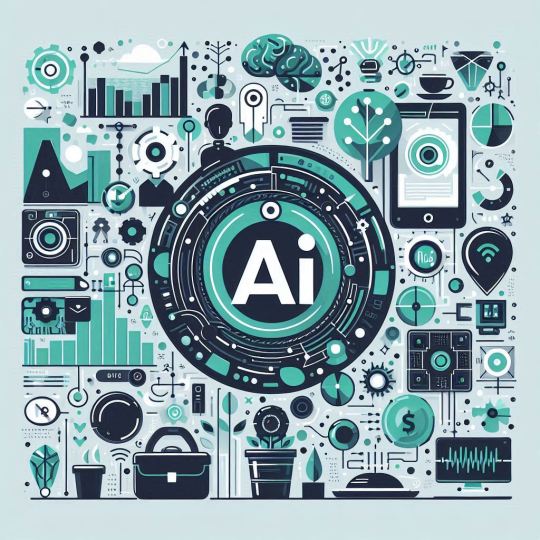
AI is revolutionizing business operations. Using AI-fuelled solutions means that you can automate processes, bring in positive customer experiences, and get insights. AI chatbots: AI can be utilized in the form of a conversational entity to support and perform backend operations, as well.
With a bit more specificity, say for example that an AI-powered recommendation engine recommends products to customers based on their browsing history and purchase patterns (as the use case of retail). This helps to increase the sales and improve the shopping experience.
3. Prioritize Cybersecurity
Cybersecurity is of utmost important as more and more business transitions towards digital platforms. Businesses need to part with a more substantial amount of money on advanced protective measures so that they can keep sensitive data private and continue earning consumer trust. Regular security audits and training of employees can reduce these risks.
Example: A financial services firm may implement multi-factor authentication (MFA) for all online transactions, regularly control access to Internet-facing administrative interfaces and service ports as well as the encryption protocols to secure client data from cyberattacks.
4. Optimizing Remote and Hybrid Working Models
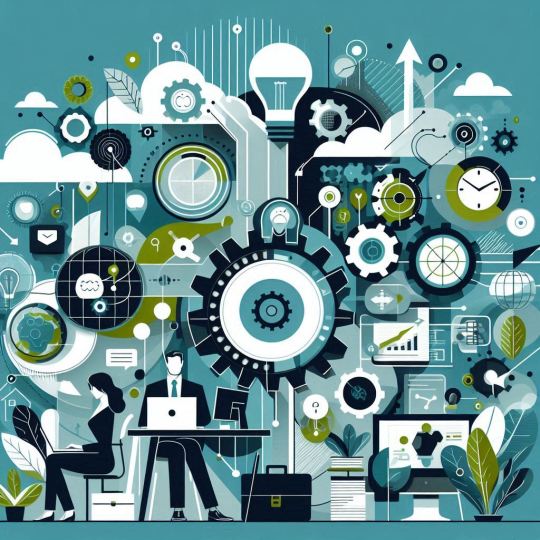
Remote / hybrid is the new normal Remote teams force companies to implement effective motivation and management strategies. Collaboration tools and a balanced virtual culture can improve productivity and employee satisfaction.
- Illustration: a Tech company using Asana / Trello etc. for pm to keep remote teams from falling out of balance. They can also organise weekly team-building activities to keep a strong team spirit.
5. Focus on Customer Experience
Retention and growth of the sales follow-through can be tied to high quality customer experiences. Harness data analytics to deepen customer insights and personalize product offers making your marketing campaigns personal: a customer support that is responsive enough can drive a great level of returning customers.
Example – For any e-commerce business, you can take user experience feedback tools to know about how your customers are getting along and make necessary changes. Custom email campaigns and loyalty programs can also be positively associated with customer satisfaction and retention.
6. Digitalization Investment
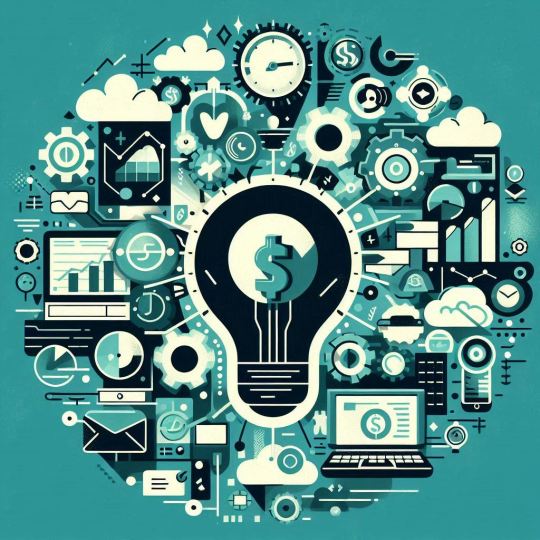
It is only the beginning of digital transformation which we all know, is key to global competitiveness. For streamlining, companies have to adopt the use advanced technologies such as Blockchain Technology and Internet of Things (IoT) in conjunction with cloud computing.
IoT example : real-time tracking and analytics to optimize supply chain management
7. Enhance Employee Skills
Develop Your Employees: Investing in employee development is key to succeeding as a business. The training is provided for the folks of various industries and so employees can increase their skills that are needed to work in a certain company. Employee performance can be enhanced by providing training programs in future technology skills and soft skills and job satisfaction.
Example: A marketing agency can host webinars or create courses to teach people the latest digital marketing trends and tools This can help to keep employees in the know which results in boosting their skills, making your campaigns successful.
8. Diversify Supply Chains
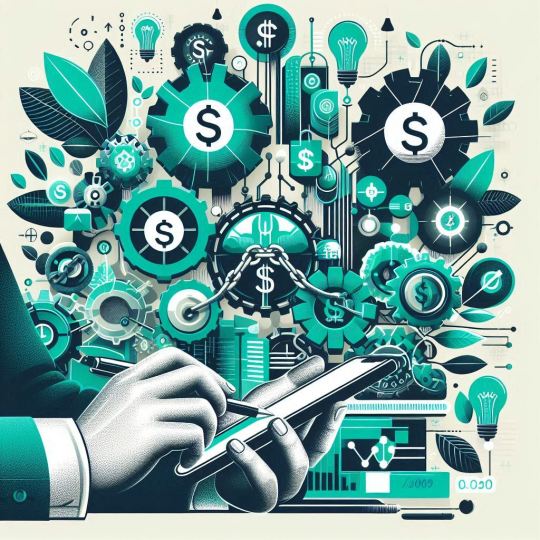
The ongoing pandemic has exposed the weaknesses of global supply chains. …diversify its supply base and promote the manufacturing of drugs in Nigeria to eliminate total dependence on a single source. In return, this approach increases resilience and reduces exposure to the risks of supply chain interruption.
- E.g., a consumer electronics company can source components from many suppliers in various regions. In so doing, this alleviates avoidable supply chain interruptions during times of political tensions or when disasters hit.
9. Make Decisions Based on Data
A business database is an asset for businesses. By implementing data, they allow you to make decisions based on the data that your analytics tools are providing. For example, sales analysis lets you track trends and better tailor your goods to the market.
Example: A retail chain can use data analytics to find out when a customer buys, and it change their purchasing policies. This can also reduce overstock and stockouts while overall, increasing efficiency.
10. Foster Innovation
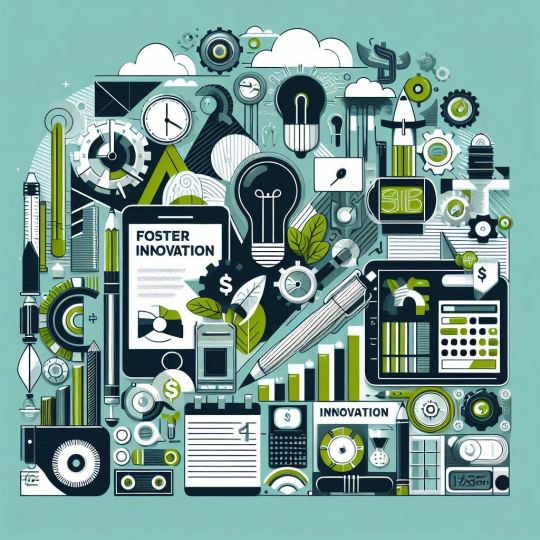
Business Growth Innovation is Key A culture of creativity and experimentation should be established in companies. Funding R&D and teaming with startups can open many doors to both solve problems creatively but also tap into new markets.
Example: A software development firm could create an innovation lab where team members are freed to work on speculative projects. Moreover, work with start-ups on new technologies and solutions.
By adopting these strategies, businesses can navigate the turbulence for 2024 and roll up market — progressive.AI with an evolving dynamic market, being ahead of trends and updated is most likely will help you thrive in the business landscape.
#ai#business#business strategy#business growth#startup#fintech#technology#tech#innovation#ai in business
2 notes
·
View notes
Text
Market Report on Vertical Farming Products: Understanding Size, Share, and Growth Trajectories
The global vertical farming market size is expected to reach USD USD 24.95 billion by 2030, according to a new report by Grand View Research, Inc. It is expected to expand at a CAGR of 20.1% from 2023 to 2030. Increased use of Internet of Things (IoT) sensors for producing crops is likely to spur market demand over the forecast period. Information obtained from the sensors is stored on the cloud and analyzed to perform the required actions. The growing automation in agriculture and increasing use of big data and predictive analytics for maximizing yields are also likely to drive the market.
Vertical farming is effective in ensuring stability in crop production and maintaining reliability even in adverse climatic conditions. It provides multiple benefits over the traditional farming technique, such as less use of water, the lesser need for agrochemicals, and low dependence on agricultural labor. Vertical farming makes use of metal reflectors and artificial lighting to maximize natural sunlight.
Genetically modified organisms and the environmental and health effects of pesticides and other non-natural substances that are used for increasing agricultural production have encouraged consumers to adopt organic foods. According to the Organic Trade Association, the U.S. organic industry sales increased by around 5% in 2019 owing to the increased investment in infrastructure and education. As per the Organic Foods Production Act of 1990, the handlers and growers of organic products need to comply with the regulations.
Artificial lighting helps in extending the hours of natural daylight, which further increases the health, growth rate, and yield of the plants. Artificial lighting such as high-pressure sodium lighting and LED lighting can extend the availability of crops (throughout a season). LED lighting systems produce a dual-band color spectrum and generate low heat. They are anticipated to witness significant growth over the forecast period.
A hydroponic system is a method of growing plants without soil. A hydroponic system eliminates the need for pesticides and artificial ripening agents and helps in producing nutritionally-rich vegetables. However, factors such as high initial investment and fewer crop varieties are likely to restrain the market growth.
For More Details or Sample Copy please visit link @: Vertical Farming Market Report
Vertical Farming Market Report Highlights
The escalating production of biopharmaceutical products is anticipated to drive the market
The shipping container segment accounted for the largest market share in 2022. Shipping container-based farming uses less water than traditional farming with drip irrigation. Shipping containers can be easily stacked, modified, recycled, and refurbished at a lower cost. Additionally, the excess availability of unused shipping containers across the region will likely influence segment growth over the forecast period
The hardware segment accounted the largest market share in 2022. The hardware plays a significant role in maintaining the environment of the indoor farms. The segment is further categorized into climate control systems, lighting systems, sensors, and irrigation systems, which enables the cultivation of indoor-grown crops
The fruits vegetables, & herbs segment is also expected to have considerable growth over the forecast period. The increasing cultivation of commonly grown fruits and vegetables in greenhouses is driving the segment growth. Crops grown in vertical farming provide maximum profit to companies involved in their cultivation
Based on offering, the climate control segment is expected to witness high growth over the forecast period as the growth of crops can be controlled by monitoring and adjusting the concentrations of minerals
By growing mechanism, the aeroponics segment is expected to observe considerable growth over the forecast period as the aeroponics facilitate fast growth in plants (under normal conditions)
The North American regional market is expected to witness significant growth over the forecast period owing to the expansion of small-scale, commercial vertical farms
Gain deeper insights on the market and receive your free copy with TOC now @: Vertical Farming Market Report
We have segmented the global vertical farming market report based on structure, growing mechanism, crop category and region.
#VerticalFarming#UrbanAgriculture#SustainableFarming#AgTech#Hydroponics#Aeroponics#SmartFarming#ControlledEnvironmentAgriculture#FoodSecurity#GreenTech#UrbanFarming#CropProduction#InnovativeAgriculture#SustainableDevelopment#ClimateSmartAgriculture#AgriTechTrends#VerticalFarmingGrowth#AgriculturalInnovation#FutureFarming#ResourceEfficientFarming
2 notes
·
View notes
Text
Textile Manufacturing Companies | Oswal Group

In the bustling industrial landscape of Ludhiana, where the clang of machinery and the hum of ambition merge, one name stands out as a beacon of excellence: The Oswal Group of Companies. Founded on a vision to redefine the textile industry in Ludhiana, Oswal Group’s journey from inception to industry leader is nothing short of inspiring.
The Genesis: The Oswal Group’s foray into the textile industry dates back to the 1960s when the visionary entrepreneur, Late Shri Rattan Chand Oswal, laid the foundation stone of what would become a textile empire. With a keen eye for opportunities and a steadfast commitment to quality, Oswal ventured into yarn production, setting the stage for the group’s meteoric rise.
Excelling in Ludhiana’s Textile Hub: Ludhiana boasts a rich heritage in textiles. In such a competitive landscape, Oswal Group didn’t just survive; it thrived. Through strategic investments in state-of-the-art technology, a relentless focus on innovation, and nurturing a skilled workforce, the Oswal Group carved a niche for itself.
The group’s vertical integration, from spinning mills to garment manufacturing, enabled streamlined operations and superior quality control. This holistic approach not only ensured consistency in product standards but also bolstered Oswal’s reputation as a reliable textile partner globally.
Moreover, Oswal Group’s commitment to sustainability has been commendable. Embracing eco-friendly practices, optimizing resource utilization, and adhering to stringent environmental regulations have not only reduced the ecological footprint but also enhanced brand credibility.
Evolution in the Textile Industry: As the textile industry in Ludhiana evolves in the digital age, Oswal Group is poised to embrace the winds of change. Embracing automation, leveraging data analytics for predictive maintenance, and integrating IoT (Internet of Things) for smart manufacturing are avenues the group can explore to enhance efficiency and productivity further.
Furthermore, investing in research and development to explore alternative fibers and sustainable manufacturing processes can bolster Oswal Group’s competitive edge. With growing consumer consciousness towards ethical sourcing and eco-friendly products, tapping into this market segment can unlock new growth avenues.
Moreover, expanding the group’s global footprint through strategic alliances and partnerships can diversify market exposure and mitigate risks associated with geographical dependencies. Collaborating with international brands for co-branded collections or joint ventures can not only enhance brand visibility but also facilitate knowledge exchange and technological advancements.
Additionally, nurturing talent through skill development programs and fostering a culture of innovation can fuel Oswal Group’s evolution. Encouraging intrapreneurship and empowering employees to think beyond conventional boundaries can lead to breakthroughs in product design, manufacturing processes, and business models.
In the tapestry of Ludhiana’s textile industry, Oswal Group’s story shines as a testament to perseverance, innovation, and resilience. From humble beginnings to scaling new heights of success, the group has not only excelled but also redefined the textile industry’s standards.
As Oswal Group embarks on the next phase of its journey, the roadmap is clear: embrace technology, foster sustainability, and nurture talent. By staying true to its core values while adapting to emerging trends, Oswal Group is poised to not just survive but thrive in the dynamic landscape of the textile industry. With each thread woven with precision and passion, the Oswal legacy continues to inspire generations, shaping the future of Ludhiana’s textile industry and beyond.
2 notes
·
View notes
Text
How Innovation Is Reshaping the Food Industry

Food innovation refers to introducing novel ideas, products, and technologies that change how society produces, processes, packages, distributes, and consumes food. It goes beyond merely creating new recipes or flavors - food innovation encompasses advances in agriculture, food science, sustainability, and packaging. The goal is to enhance efficiency, safety, nutrition, and the overall consumer experience.
The need for food innovation arises from the ever-changing demands of consumers and the pressing challenges faced by the industry. As the global population continues to grow, so does the demand for food. Additionally, sustainability concerns, climate change, and limited resources prompt exploring alternative food growing and production methods. Innovations in food aim to enhance food security, minimize environmental impact, and offer consumers healthier, more diverse options.
Food innovation occurs through a combination of research, collaboration, and creativity. Scientists, entrepreneurs, farmers, and food industry professionals work together to develop new technologies and processes. Research institutions and startups play a crucial role in conducting experiments, testing new concepts, and bringing innovative products to the market.
In recent years, the food industry has witnessed groundbreaking innovations reshaping how people interact with food. The plant-based movement has gained immense traction, with plant-based alternatives for meat, dairy, and seafood becoming mainstream. Companies have developed plant-based burgers, vegan cheeses, and sustainable seafood alternatives using cutting-edge technologies. Beyond plant-based options, innovations have also focused on alternative protein sources, such as insect-based proteins and lab-grown meats, offering sustainable and protein-rich alternatives.
Swedish startup Mycorena is boosting microbial protein production through its fungi-based mycoprotein called Promyc. This ingredient can be used to create meat and tuna alternatives, beverage additives, and dessert ingredients, offering plant-based and sustainable options for consumers.
Finnish startup Onego Bio has developed a product genetically identical to egg whites using fermentation, and without using actual chickens. It uses precision fermentation of a microflora called Trichoderma reesei to produce ovalbumin, the protein found in chicken egg whites. This technology offers a sustainable and animal-friendly alternative for various food applications, including baked goods, desserts, sauces, and dressings.
Companies like New Culture are incorporating animal-free casein into their cheeses through precision fermentation. This breakthrough allows them to produce animal-free mozzarella cheese, offering a delicious and cruelty-free alternative to traditional dairy products.
In addition, consumers increasingly seek transparency in food choices, leading to the clean label movement. Brands are responding by using simple natural ingredients and avoiding artificial additives and preservatives.
Breakthrough innovations in the food industry are revolutionizing how society grows, produces, and consumes food, focusing on sustainability, nutrition, and convenience. One such innovation is plastic-free and smart packaging. Food companies are exploring biodegradable and even edible packaging solutions in response to environmental concerns. Smart packaging using nanotechnology is also gaining popularity, allowing consumers to assess food safety and quality easily.
The Internet of Things (IoT) in agriculture employs sensors and data analytics for optimizing crop conditions, irrigation, and pest control, reducing resource usage. Food waste reduction solutions, such as surplus food redistribution platforms, are being developed to combat the global food waste crisis. Moreover, biotechnology and data science advances enable personalized nutrition, tailoring dietary recommendations to individuals based on their genetic makeup, lifestyle, and health goals. These innovations promise a more sustainable, healthier, and efficient food future.
Food innovation is driving a remarkable transformation in the food industry, responding to the challenges and opportunities of today. From new plant-based products to sustainable agriculture and cutting-edge technologies, the future of food promises to be more diverse, nutritious, and sustainable. As consumers, entrepreneurs, and stakeholders continue to embrace innovation, the food industry's journey toward a more resilient and conscious future is set to continue.
13 notes
·
View notes
Text
Transforming the Health Landscape: The Global Blockchain in Healthcare Market
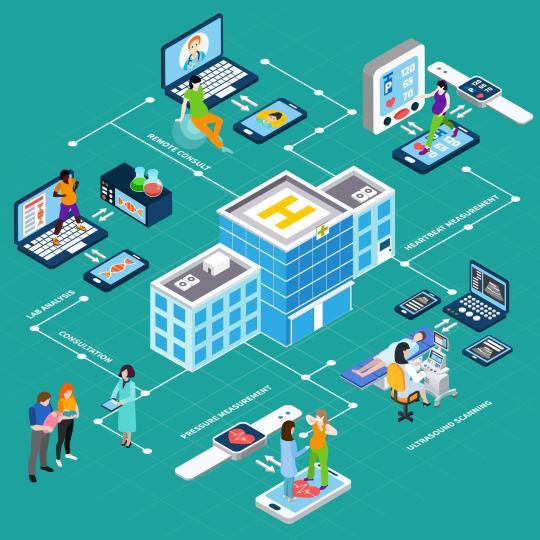
The integration of blockchain technology into the healthcare sector is revolutionizing the way medical data is managed, shared, and secured. As the demand for transparent, efficient, and secure healthcare services grows, blockchain offers promising solutions to longstanding challenges.
Understanding Blockchain in Healthcare
Blockchain Technology is a decentralized digital ledger that records transactions across multiple computers in a way that ensures the security and transparency of data. In healthcare, blockchain can be used to manage patient records, track pharmaceuticals, ensure the integrity of clinical trials, and streamline administrative processes. The immutable nature of blockchain helps in preventing data breaches, ensuring data accuracy, and enhancing patient privacy.
According to BIS Research, the Global Blockchain in Healthcare Market was estimated to grow to a value of $5.61 billion by 2025, and still the market is showing a steep growth till 2030 witnessing a double-digit CAGR growth rate throughout the forecast period.
Key Market Dynamics
Several factors are driving the growth of the global blockchain in healthcare market:
Data Security and Privacy:
Need for robust data security and privacy solutions.
Healthcare data breaches are a growing concern.
Blockchain's secure, immutable nature protects sensitive patient information.
Interoperability and Data Sharing:
Facilitates seamless data sharing between healthcare providers and systems.
Overcomes current interoperability issues.
Leads to better patient outcomes by providing a comprehensive view of health history.
Supply Chain Transparency:
Tracks the entire lifecycle of drugs in the pharmaceutical industry.
Ensures the authenticity of medications.
Helps combat counterfeit drugs.
Efficient Administrative Processes:
Streamlines various administrative processes, such as billing and claims management.
Reduces fraud and administrative costs.
Support from Regulatory Bodies:
Increasing support from regulatory bodies and governments.
Initiatives by FDA and EMA to explore blockchain for drug traceability and clinical trials boost market growth.
Request for an updated Research Report on Global Blockchain in Healthcare Market Research.
Global Blockchain in Healthcare Industry Segmentation
Segmentation by Application:
Data Exchange and Interoperability
Supply Chain Management
Claims Adjudication and Billing Management
Clinical Trials and Research
Others
Segmentation by End-User:
Healthcare Providers
Pharmaceutical Companies
Payers
Others
Segmentation by Region:
North America
Europe
Asia-Pacific
Latin America and Middle East & Africa
Future Market Prospects
The future of the global blockchain in healthcare market looks promising, with several trends likely to shape its trajectory:
Integration with AI and IoT: The integration of blockchain with artificial intelligence (AI) and the Internet of Things (IoT) will enhance data analytics, predictive healthcare, and real-time monitoring.
Expansion of Use Cases: New use cases for blockchain in digital healthcare will emerge, including patient-centered care models, personalized medicine, and enhanced telemedicine services.
Focus on Patient-Centric Solutions: Blockchain will enable more patient-centric healthcare solutions, empowering patients with greater control over their health data and enhancing patient engagement.
Development of Regulatory Frameworks: The establishment of clear regulatory frameworks and industry standards will facilitate the widespread adoption of blockchain in healthcare.
Conclusion
The Global Blockchain in Healthcare Industry is poised for significant growth, driven by the need for enhanced data security, interoperability, supply chain transparency, and efficient administrative processes. By addressing challenges related to regulatory compliance, implementation costs, standardization, and scalability, and leveraging opportunities in technological advancements, investments, partnerships, and government initiatives, the potential of blockchain in healthcare can be fully realized. This technology promises to revolutionize healthcare delivery, enhancing efficiency, transparency, and patient outcomes, and setting new standards for the future of digital health.
#Blockchain in Healthcare Market#Blockchain in Healthcare Industry#Blockchain in Healthcare Market Report#Blockchain in Healthcare Market Research#Blockchain in Healthcare Market Forecast#Blockchain in Healthcare Market Analysis#Blockchain in Healthcare Market Growth#BIS Research#Healthcare
2 notes
·
View notes
Text
Exploring the Latest Breakthroughs in Technology
Introduction
Technology is evolving at a rapid pace, bringing with it groundbreaking innovations that are reshaping our world. From artificial intelligence to renewable energy solutions, these advancements are enhancing our lives in ways we never imagined. In this article, we'll explore some of the most exciting recent breakthroughs in technology that are set to transform various industries and everyday life.
1. Artificial Intelligence and Machine Learning
Artificial Intelligence (AI) and Machine Learning (ML) are at the forefront of technological innovation. AI and ML are being integrated into a myriad of applications, from healthcare diagnostics to personalized marketing. These technologies analyze vast amounts of data to make predictions, automate processes, and provide valuable insights.
AI in Healthcare
AI is revolutionizing healthcare by improving diagnostic accuracy and patient care. Machine learning algorithms can analyze medical images to detect diseases like cancer at early stages, enabling timely treatment and better patient outcomes.
AI in Everyday Life
In our daily lives, AI powers virtual assistants like Siri and Alexa, enhances customer service through chat-bots, and personalizes our online shopping experiences. The continuous improvement of AI algorithms is making these applications smarter and more efficient.
2. Quantum Computing
Quantum Computing promises to solve problems that are currently insurmountable for classical computers. By leveraging the principles of quantum mechanics, quantum computers perform complex calculations at unprecedented speeds.
Advancements in Cryptography
Quantum computing has the potential to revolutionize cryptography by breaking encryption codes that secure our digital communications. This breakthrough necessitates the development of new cryptographic methods to protect sensitive information.
Applications in Drug Discovery
In the pharmaceutical industry, quantum computing can simulate molecular interactions at a granular level, accelerating the drug discovery process and leading to the development of new, effective medications.
3. Renewable Energy Technologies
The shift towards renewable energy technologies is crucial in combating climate change. Innovations in solar, wind, and battery technologies are making renewable energy more efficient and accessible.
Solar and Wind Energy
Recent advancements in solar panel efficiency and wind turbine design are increasing the amount of energy harvested from natural sources. These improvements are making renewable energy a viable alternative to fossil fuels.
Energy Storage Solutions
Enhanced battery technologies are crucial for storing renewable energy, ensuring a consistent power supply even when the sun isn't shining or the wind isn't blowing. Breakthroughs in battery capacity and lifespan are driving the adoption of renewable energy systems.
4. Internet of Things (IoT)
The Internet of Things (IoT) connects devices and systems, enabling them to communicate and share data. This connectivity is transforming homes, industries, and cities into smarter, more efficient environments.
Smart Homes
IoT technology is making homes smarter by automating lighting, heating, and security systems. Smart home devices can be controlled remotely, offering convenience and energy savings.
Industrial IoT
In industrial settings, IoT devices monitor equipment health and optimize manufacturing processes. Predictive maintenance enabled by IoT sensors can reduce downtime and improve efficiency.
5. Blockchain Technology
Blockchain is revolutionizing how we handle transactions and data security. This decentralized ledger technology ensures transparency and security in various applications.
Financial Transactions
Blockchain is streamlining financial transactions by eliminating the need for intermediaries. It provides a secure and transparent way to transfer funds and verify transactions.
Supply Chain Management
In supply chains, blockchain offers traceability and transparency, reducing fraud and ensuring the authenticity of products. This technology is particularly beneficial in industries like pharmaceuticals and food.
6. 5G Technology
The roll-out of 5G technology is set to enhance connectivity with faster speeds and lower latency. This advancement will support the growth of IoT, autonomous vehicles, and smart cities.
Enhanced Mobile Connectivity
5G technology promises to improve mobile experiences with seamless streaming and quick downloads. It will also enable new applications in virtual and augmented reality.
Smart Cities
5G will facilitate the development of smart cities, where real-time data exchange enhances urban management systems, traffic control, and emergency services.
7. Autonomous Vehicles
Autonomous vehicles are set to transform transportation. Advances in AI and sensor technology are bringing self-driving cars closer to reality, offering safer and more efficient travel options.
Safety and Efficiency
Autonomous vehicles can reduce accidents caused by human error and optimize traffic flow, reducing congestion and emissions. They hold the potential to revolutionize the logistics and delivery sectors.
Delivery Services
Self-driving delivery vehicles and drones are making logistics faster and more reliable. These innovations are particularly beneficial in urban areas, where they can reduce traffic and pollution.
8. Biotechnology
Biotechnology is advancing rapidly, offering solutions in healthcare, agriculture, and environmental management. Innovations in gene editing, synthetic biology, and bio-engineering are opening new possibilities.
Gene Editing
CRISPR technology is enabling precise gene editing, offering potential cures for genetic diseases and innovations in agriculture. This technology is paving the way for new treatments and sustainable farming practices.
Synthetic Biology
Synthetic biology is creating new biological systems and organisms, leading to advancements in medicine, bio-fuels, and sustainable materials. This field holds promise for addressing global challenges such as disease and climate change.
9. Augmented Reality (AR) and Virtual Reality (VR)
AR and VR technologies are providing immersive experiences in entertainment, education, and various professional fields. These technologies are creating new ways to interact with digital content.
Gaming and Entertainment
AR and VR are enhancing gaming experiences by creating immersive environments and interactive game-play. These technologies are also being used in movies and virtual concerts, offering new forms of entertainment.
Professional Training
In education and professional training, AR and VR offer realistic simulations for hands-on learning. Fields like medicine, engineering, and aviation benefit from these technologies by providing safe and effective training environments.
Conclusion
The latest breakthroughs in technology are driving significant changes across various sectors. From AI and quantum computing to renewable energy and autonomous vehicles, these innovations are shaping the future and improving our lives. Staying informed about these developments is crucial for individuals and businesses alike to leverage the benefits of these technological advancements. As we look to the future, these game-changing technologies will continue to evolve, offering new opportunities and solutions to the challenges we face.
#technology#artificial intelligence#virtual reality#immersive technology#renewableenergy#ai algorithm#valuable insights#internet of things#technological advancements
2 notes
·
View notes
Text
Maximizing ROI: The Cost-Effectiveness of Amazon Web Services (AWS)
In today's digitally driven landscape, cloud computing has become synonymous with innovation and operational efficiency for businesses worldwide. Among the plethora of cloud service providers, Amazon Web Services (AWS) stands tall, offering an extensive suite of tools and solutions to empower organizations on their path to digital transformation. This in-depth exploration navigates through the core features, advantages, and transformative impact that AWS brings to businesses of all sizes.

Introducing Amazon Web Services (AWS)
Amazon Web Services, commonly referred to as AWS, is a cloud computing platform introduced by Amazon.com in 2006. Since its inception, AWS has redefined the accessibility and utilization of computing resources, storage solutions, and an array of IT services. Its distinguishing factors lie in its unmatched scalability, reliability, and diverse service offerings, making it the preferred choice across industries, from startups to enterprise-level corporations and government entities.
Scalability: Harnessing Elasticity for Dynamic Growth
AWS's hallmark feature is its elastic scalability, empowering businesses to seamlessly adjust their computing resources according to fluctuating demands. With AWS, organizations can effortlessly scale their infrastructure up or down, ensuring optimal performance and cost efficiency. Whether handling sudden spikes in website traffic or launching new applications, AWS provides the agility necessary to respond swiftly to evolving business needs.
Reliability: Building Upon a Foundation of Resilience
Reliability is a cornerstone of cloud computing, and AWS excels in this domain. By leveraging multiple data centers distributed across different geographic regions, AWS offers a highly redundant infrastructure, minimizing the risk of downtime and ensuring uninterrupted service availability. Through the strategic distribution of workloads across various availability zones, AWS provides inherent fault tolerance, enabling businesses to achieve exceptional levels of reliability for their critical applications and services.
Cost-effectiveness: Maximizing Value with Flexible Pricing Models
In a competitive market, cost optimization is paramount for businesses. AWS's pay-as-you-go pricing model enables organizations to pay solely for the resources they consume, eliminating the need for upfront investments in hardware or long-term commitments. This flexible pricing structure, coupled with robust cost management tools like AWS Cost Explorer and AWS Budgets, empowers businesses to manage their cloud expenditures effectively and optimize return on investment (ROI).

Security: Fortifying Digital Assets with Comprehensive Protections
Security is a top priority in the cloud, and AWS places great emphasis on it. Through stringent security measures such as encryption, access controls, and network security protocols, AWS provides a secure environment for sensitive data and critical workloads. Additionally, AWS offers compliance certifications tailored to various industry standards, ensuring that businesses can meet regulatory requirements seamlessly. Whether safeguarding customer data or protecting intellectual property, AWS instills confidence through its commitment to best-in-class security practices.
Diverse Service Portfolio: Enabling Innovation Across Industries
AWS boasts a diverse and extensive service portfolio, catering to a myriad of use cases and industry verticals. From foundational services like compute instances (EC2) and storage solutions (S3) to advanced offerings such as machine learning (Amazon SageMaker) and Internet of Things (IoT) platforms, AWS provides the essential tools needed to drive innovation and unlock new opportunities. Whether developing mobile applications, analyzing vast datasets, or deploying global e-commerce platforms, AWS offers the comprehensive suite of services to support diverse business objectives.
Flexibility and Customization: Tailoring Solutions to Unique Needs
A key strength of AWS lies in its flexibility and customization capabilities. With a vibrant ecosystem of third-party integrations and tools, AWS empowers businesses to tailor their cloud environments to align with specific requirements. Whether implementing hybrid cloud architectures, adopting DevOps practices, or integrating seamlessly with existing IT systems, AWS offers the flexibility necessary to adapt and innovate within the dynamic business landscape.
Conclusion: Embracing the Future with AWS
In summary, Amazon Web Services (AWS) transcends the realm of mere cloud computing—it serves as a catalyst for innovation, efficiency, and growth. With its unmatched scalability, reliability, cost-effectiveness, security measures, and diverse service portfolio, AWS empowers businesses to realize their full potential in the digital age. Whether aspiring to disrupt markets as a startup or striving for operational excellence as an enterprise, AWS provides the indispensable tools and services to transform visions into reality. Embrace the future of cloud computing with AWS and embark on a journey of endless possibilities.
2 notes
·
View notes
Text
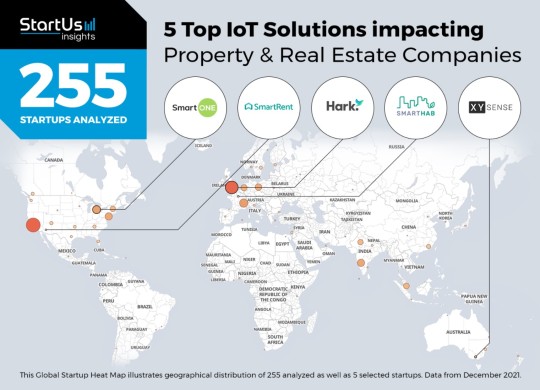
Internet Of Things IN REAL ESTATE:
Internet of Things (IoT) smart devices can do more than just monitor the physical environment of a building; they can also help monitor activity and protect from unauthorized usage. For example, IoT sensors are used in various systems within buildings to track water pressure and electricity usage. You’ll know if something needs maintenance if any of the indicators are off the charts. In the coming years, IoT devices will also become increasingly intertwined with other aspects of real estate management. For example, this real estate technology can be used to:
1. Help regulate heating and cooling systems to save energy and reduce costs for property owners;
2. Connect with smart locks, so you can control access remotely or based on specific conditions;
3. Enable agents to provide a more personalized and seamless experience;
4. Monitor customer activity on the property so that agents can respond to any inquiries quickly and efficiently;
5. Send automated notifications about maintenance issues or late payments.
All in all, IoT devices are set to revolutionize the real estate market in the coming years. By leveraging this powerful technology, real estate agents can provide a more tailored and efficient service to their clients. This could potentially increase customer satisfaction and loyalty.
Example
CBRE uses IoT sensors—they collect data about building performance, like energy usage—to improve building management and optimize operations. In one case, using such sensors allowed the service to identify HVAC system issues and cut energy costs by 20%. CBRE is also helping Shell reach its goal of reducing 20% greenhouse gas emissions by 2035, thanks to IoT.
#KhalidAlbeshri #pivot #Holdingcompany #CEO #Realestate #realestatedevelopment #contentmarketing #businessmanagement #businessconsultants #businessstartup #marketingtips #خالدالبشري
#advertising#artificial intelligence#autos#business#developers & startups#edtech#education#finance#futurism#marketing
2 notes
·
View notes
Text
Edge Computing Market Disruption: 7 Startups to Watch
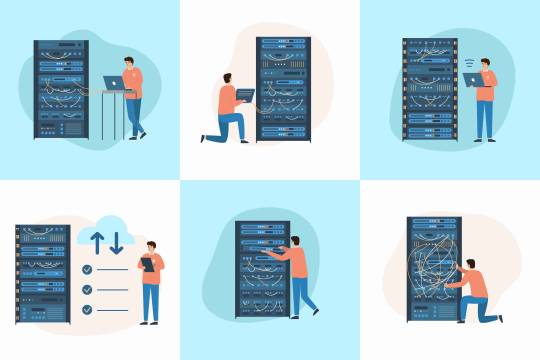
Edge Computing Market Valuation and Projections
The global edge computing market is undergoing a transformative evolution, with projections estimating an edge computing market size escalation from USD 15.96 billion in 2023 to approximately USD 216.76 billion by 2031, marking a compound annual growth rate (CAGR) of 33.6%. This unprecedented trajectory is being driven by rising demand for real-time data processing, the proliferation of Internet of Things (IoT) devices, and the deployment of 5G infrastructure worldwide.
Request Sample Report PDF (including TOC, Graphs & Tables): https://www.statsandresearch.com/request-sample/40540-global-edge-computing-market
Accelerated Demand for Real-Time Data Processing
Edge computing is revolutionizing the digital ecosystem by decentralizing data processing, shifting it from core data centers to the edge of the network—closer to the point of data generation. This architectural transformation is enabling instantaneous insights, reduced latency, and optimized bandwidth usage, which are critical in sectors requiring rapid decision-making.
Industries such as automotive, healthcare, telecommunications, and manufacturing are leading adopters of edge technologies to empower smart operations, autonomous functionality, and predictive systems.
Get up to 30%-40% Discount: https://www.statsandresearch.com/check-discount/40540-global-edge-computing-market
Edge Computing Market Segmentation Analysis:
By Component
Hardware
Edge computing hardware includes edge nodes, routers, micro data centers, servers, and networking gear. These devices are designed to endure harsh environmental conditions while delivering low-latency data processing capabilities. Companies are investing in high-performance edge servers equipped with AI accelerators to support intelligent workloads at the edge.
Software
Software solutions in edge environments include container orchestration tools, real-time analytics engines, AI inference models, and security frameworks. These tools enable seamless integration with cloud systems and support distributed data management, orchestration, and real-time insight generation.
Services
Edge services encompass consulting, deployment, integration, support, and maintenance. With businesses adopting hybrid cloud strategies, service providers are essential for ensuring compatibility, uptime, and scalability of edge deployments.
By Application
Industrial Internet of Things (IIoT)
Edge computing plays a vital role in smart manufacturing and Industry 4.0 initiatives. It facilitates predictive maintenance, asset tracking, process automation, and remote monitoring, ensuring enhanced efficiency and minimized downtime.
Smart Cities
Municipalities are leveraging edge computing to power traffic control systems, surveillance networks, waste management, and public safety infrastructure, enabling scalable and responsive urban development.
Content Delivery
In media and entertainment, edge solutions ensure low-latency content streaming, localized data caching, and real-time audience analytics, thereby optimizing user experience and reducing network congestion.
Remote Monitoring
Critical infrastructure sectors, including energy and utilities, employ edge computing for pipeline monitoring, grid analytics, and remote equipment diagnostics, allowing for proactive threat identification and response.
By Industry Vertical
Manufacturing
Edge solutions in manufacturing contribute to real-time production analytics, defect detection, and logistics automation. With AI-powered edge devices, factories are becoming increasingly autonomous and intelligent.
Healthcare
Hospitals and clinics implement edge computing to support real-time patient monitoring, diagnostic imaging processing, and point-of-care data analysis, enhancing treatment accuracy and responsiveness.
Transportation
The sector is utilizing edge technology in autonomous vehicle systems, smart fleet tracking, and intelligent traffic signals. These systems demand ultra-low latency data processing to function safely and efficiently.
Energy & Utilities
Edge computing enables smart grid optimization, renewable energy integration, and predictive fault detection, allowing utilities to manage resources with greater precision and sustainability.
Retail & Others
Retailers deploy edge devices for personalized marketing, real-time inventory management, and customer behavior analysis, enabling hyper-personalized and responsive shopping experiences.
Key Drivers Behind Edge Computing Market Growth:
1. IoT Proliferation and Data Deluge
With billions of connected devices transmitting real-time data, traditional cloud architectures cannot meet the bandwidth and latency demands. Edge computing solves this by processing data locally, eliminating unnecessary round trips to the cloud.
2. 5G Deployment
5G networks offer ultra-low latency and high throughput, both essential for edge applications. The synergy between 5G and edge computing is pivotal for real-time services like AR/VR, telemedicine, and autonomous navigation.
3. Hybrid and Multi-Cloud Strategies
Enterprises are embracing decentralized IT environments. Edge computing integrates with cloud-native applications to form hybrid infrastructures, offering agility, security, and location-specific computing.
4. Demand for Enhanced Security and Compliance
By localizing sensitive data processing, edge computing reduces exposure to cyber threats and supports data sovereignty in regulated industries like finance and healthcare.
Competitive Landscape
Leading Players Shaping the Edge Computing Market
Amazon Web Services (AWS) – Offers AWS Wavelength and Snowball Edge for low-latency, high-performance edge computing.
Microsoft Azure – Delivers Azure Stack Edge and Azure Percept for AI-powered edge analytics.
Google Cloud – Provides Anthos and Edge TPU for scalable, intelligent edge infrastructure.
IBM – Offers edge-enabled Red Hat OpenShift and hybrid edge computing solutions for enterprise deployment.
NVIDIA – Powers edge AI workloads with Jetson and EGX platforms.
Cisco Systems – Delivers Fog Computing and edge networking solutions tailored to enterprise-grade environments.
Dell Technologies – Supplies ruggedized edge gateways and scalable edge data center modules.
Hewlett Packard Enterprise (HPE) – Delivers HPE Edgeline and GreenLake edge services for data-intensive use cases.
FogHorn Systems & EdgeConneX – Innovators specializing in industrial edge analytics and data center edge infrastructure respectively.
Edge Computing Market Regional Insights
North America
A mature digital infrastructure, coupled with high IoT adoption and strong cloud vendor presence, makes North America the dominant regional edge computing market.
Asia-Pacific
Driven by rapid urbanization, smart city initiatives, and industrial automation in China, India, and Japan, Asia-Pacific is projected to experience the fastest CAGR during the forecast period.
Europe
The region benefits from strong government mandates around data localization, Industry 4.0 initiatives, and investments in telecom infrastructure.
Middle East and Africa
Emerging adoption is evident in smart energy systems, oilfield monitoring, and urban digital transformation projects.
South America
Growth in agritech, mining automation, and public safety systems is propelling the edge market in Brazil, Chile, and Argentina.
Purchase Exclusive Report: https://www.statsandresearch.com/enquire-before/40540-global-edge-computing-market
Edge Computing Market Outlook and Conclusion
Edge computing is not just an enabler but a strategic imperative for digital transformation in modern enterprises. As we move deeper into an AI-driven and hyperconnected world, the integration of edge computing with 5G, IoT, AI, and cloud ecosystems will redefine data management paradigms.
Businesses investing in edge infrastructure today are setting the foundation for resilient, intelligent, and real-time operations that will determine industry leadership in the years ahead. The edge is not the future—it is the present frontier of competitive advantage.
Our Services:
On-Demand Reports: https://www.statsandresearch.com/on-demand-reports
Subscription Plans: https://www.statsandresearch.com/subscription-plans
Consulting Services: https://www.statsandresearch.com/consulting-services
ESG Solutions: https://www.statsandresearch.com/esg-solutions
Contact Us:
Stats and Research
Email: [email protected]
Phone: +91 8530698844
Website: https://www.statsandresearch.com
1 note
·
View note
Text
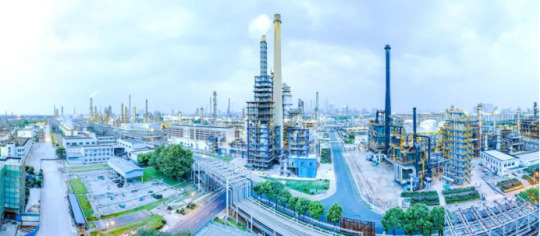
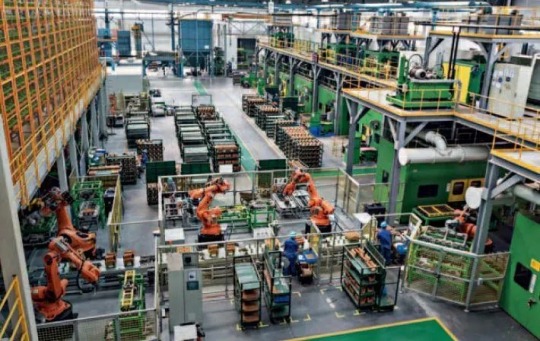

Looking forward to China’s industrial development prospects in the next 10 years
Looking forward to China's industrial development in the next 10 years, analysis and predictions can be made based on existing development trends, policy orientations and the global economic environment:
Industrial upgrading and structural optimization:
China will continue to promote the upgrading of its industrial structure from labor-intensive to technology- and capital-intensive. Mid- to high-end manufacturing will be the key development direction, including aerospace, high-end equipment, new energy vehicles, new materials and other fields. With the deepening implementation of the "Made in China 2025" strategy and subsequent planning, China will accelerate the in-depth integration of industrialization and informatization, and promote the development of emerging industries such as intelligent manufacturing and the industrial Internet. Innovation drive and technological progress:
Against the background of intensified global technological competition, China will further increase investment in technological innovation, especially in fields such as 5G, artificial intelligence, Internet of Things (IoT), quantum information, and biotechnology, to enhance the core competitiveness of the industry. Industry 4.0 related technologies and digital transformation will become mainstream. Enterprises will improve production efficiency and product quality through automation and intelligent transformation, and achieve personalized customization and flexible production. Green and sustainable development:
Environmental protection policies are becoming stricter, and low-carbon economy and circular economy will have a profound impact on the path of industrial development. China's industry will be committed to energy conservation and emission reduction, clean production, and the development of green manufacturing systems, such as new energy, energy-saving and environmental protection equipment and services.
Globalization and industrial chain reconstruction:
Taking into account the rise of trade protectionism and the adjustment trend of global supply chains, Chinese industry will actively build independent and controllable industrial and supply chains, seek a higher position in the global value chain, and enhance international competitiveness. While low-end industries are being transferred, China will strengthen international cooperation in some areas, actively participate in the global industrial division of labor, and build international brands and multinational companies. Talent training and system reform:
Facing the challenge of aging, China will pay more attention to the cultivation and introduction of talents, improve the quality of the labor force, especially the construction of highly skilled talent teams, to support the development needs of high-end industries. Deepen institutional reform, create a better business environment, encourage innovation and entrepreneurship, promote the development of small, medium and micro enterprises, and stimulate market vitality. To sum up, in the next ten years, China's industry will focus on high-quality development, focus on technological innovation, industrial chain upgrading, green development and improvement of global competitiveness, and strive to achieve the leap from a manufacturing country to a manufacturing power. At the same time, we will also respond to the challenges brought about by changes in the internal and external environments, continue to deepen reforms, and ensure the stable and healthy development of the industrial economy.
2 notes
·
View notes